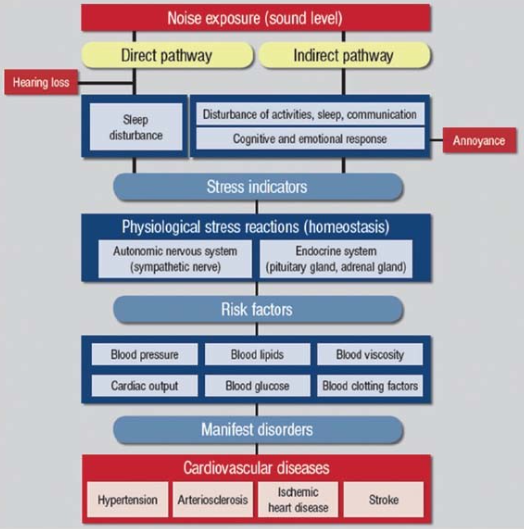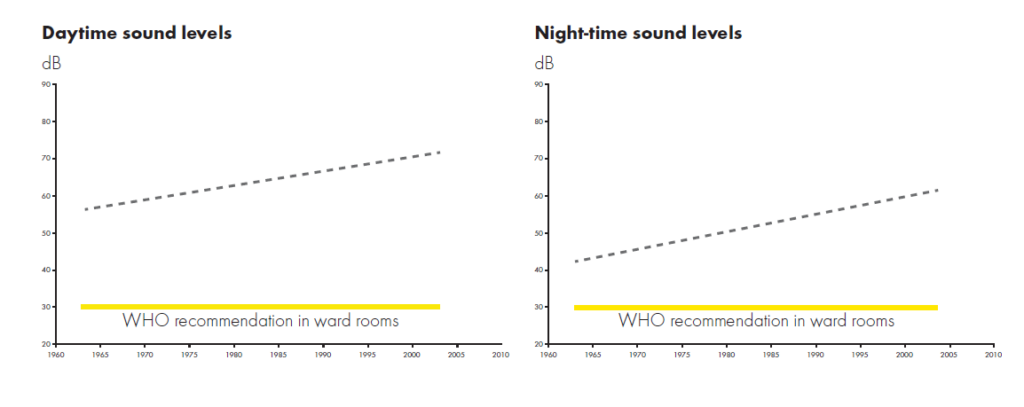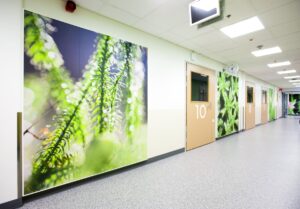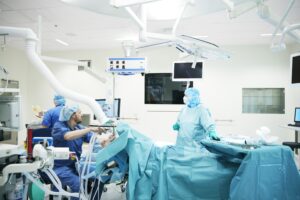
Traffic noise makes us sick
The Danish Cancer Foundation has concluded less than 2 years ago that traffic noise can lead to breast cancer and non-Hodgkins lymphoma. The Danish Ministry of Environment concluded at the same time that 500 Danes die every year because of traffic noise – because of diabetes, stress and cardio vascular diseases caused by noise. The Danish Road Directorate concluded that 90,000 Danes out of a population of 5,600,000 are suffering from traffic noise and the directorate states that their newest survey shows a tendency that is accelerating. International surveys have traditionally shown that the negative impact ‘only’ affected half of what we see now. The publication can be found by clicking here.
The publication is based on information from 7,000 people who are exposed to sound levels over 58 dB every day and night. Because of traffic.
Noise and cardiovascular diseases
The well-known professor Dr. Wolgang Babisch has been studying this for a lot of years – and he uses a model to explain what can happen when human beings are exposed to sound. Model by Dr. W. Babisch:

His model shows pedagogically how stress indicators can lead to risk factors and end up by being diseases. Click to see an interview with Dr. W. Babisch here. He shares his thoughts about urban noise in the future.
Sound in healthcare
Let’s go back to numbers from the report again. The number 58 dB is crucial for people, and it makes me think of sound levels in healthcare facilities. In 2005 Busch-Visniac et al concluded that sound levels in hospitals have increased by 15 dB during daytime and 18 dB during the night since the sixties and that the sound levels are now OVER 58 dB day and night!

So the paradox is… We get sick because of traffic noise – and then we become patients. Patients in hospitals. Hospitals with sound levels higher than the traffic noise.
Five tips
Research since many years have shown that we actually can do something about it. It is possible to work with room acoustics in healthcare facilities despite the high hygiene demands. Besides consulting an acoustician here are our five tips to improve the sound environment in hospitals:
1. Room design imitating nature
Our hearing has evolved so that it works best outdoors in the natural world. The objective is therefore to try to imitate nature’s acoustic environment inside hospitals. In the natural world we seldom find straight, parallel surfaces that reflect sound waves back and forth across a space, producing disturbing responses.

Consider the fact that long corridors designed only with reflective surfaces will carry sound over longer distances, increasing noise levels in general. Irregular spatial design is therefore preferable where possible. Irregular or convex-shaped reception desks could be a solution, as these distribute the sound waves in different directions.
Sound-absorbent cleanable wall panels may be used to absorb noise from the nurses’ station and corridors, reducing the overall noise level within the space. Printed with appropriate motifs, such as serene images of nature, these can also help promote a sense of calm and security.
2. Reduce equipment noise
High noise levels in the vicinity of patients are a constant problem in ICU. Identify any sources of excess noise, such as food trolleys, automatic door openers, telephones, beds, alarms and pagers. The stand holding all the intravenous equipment is often the source of various alarm sounds.
Although it is essential that certain alarms are heard above the background noise, it is nevertheless possible to set requirements regarding noise levels when purchasing equipment. Could the alarm sound gradually increase in volume? Alarm systems that do not employ audible signals are also available.
3. Increase distance between patient and noise source
Consider increasing the distance between noisy pieces of equipment and the patient’s ears. Our hearing is never turned off, and our brains constantly process sound signals. Tearing open a sterile package can create a noise measuring 70 dB, so avoid doing so near the patient’s head. Step away towards the foot of the bed if possible.
4. Screens between patients
Overhearing other patients’ conversations, the sound of snoring and patients being in pain are examples of noise that can be discomfiting. This is one of the less pleasant memories many people are left with after being in hospital. The use of suitable, movable sound-absorbent screens between patients, perhaps with a glazed upper section, so that staff do not lose sight of other patients, could help.
5. Ceilings and wall absorbers that meet hygiene standards

Operating theatres can be a noisy environment, especially during orthopaedic procedures when surgeons use drills and saws. Meanwhile, clear communication is absolutely essential to a successful operation.
Operating theatres often have bare, easily washable floors, walls and ceilings made from hard materials, which contribute to high noise levels and prolonged reverberation.
However washable, disinfectable sound-absorbent ceilings and wall absorbers are available that often meet all necessary hygiene standards.

